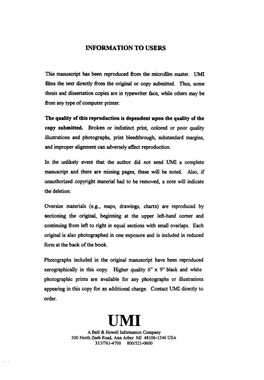| dc.contributor.advisor | Elmore, R. Douglas, | en_US |
| dc.contributor.author | Banerjee, Sanjay. | en_US |
| dc.date.accessioned | 2013-08-16T12:29:38Z | |
| dc.date.available | 2013-08-16T12:29:38Z | |
| dc.date.issued | 1997 | en_US |
| dc.identifier.uri | https://hdl.handle.net/11244/5482 | |
| dc.description.abstract | The TVRM present in Belden carbonates is pervasive whereas the CRM is widespread but site specific, thus providing an opportunity to magnetically characterize the two components. Specimens with the CRM have higher saturation remanence and acquire an anhysteretic magnetization over a broader coercivity range than the TVRM. The CRM has higher coercivity and saturation remanence/saturation magnetization values indicating that it is carried by finer grains of magnetite than the TVRM. Coercivity and saturation magnetization ratios are consistent with other carbonates interpreted to be remagnetized by chemical processes. The TVRM is interpreted to be carried by coarser authigenic or detrital grains of magnetite than the CRM. | en_US |
| dc.description.abstract | Lower Pennsylvanian Belden Formation carbonates from Central Colorado were subjected to paleomagnetic, rock magnetic and geochemical studies to test for a connection between a chemical remanent magnetization (CRM) in authigenic magnetite and burial diagenesis. Thermal demagnetization shows that Belden lithologies carry up to two components of natural remanent magnetization (NRM) beside a modern, viscous magnetization. An intermediate unblocking temperature (250-400$\sp\circ$C) component with Tertiary directions is interpreted to be a thermoviscous remanent magnetization (TVRM) acquired while cooling from maximum burial. Many Belden limestones also contain a high unblocking temperature (400-570$\sp\circ$C) component interpreted as a CRM. Rock magnetic studies indicate that both components are carried by magnetite of single domain/pseudo-single domain grain size. | en_US |
| dc.description.abstract | Based on previous studies and petrographic evidence, the CRM interpreted to reside in authigenic magnetite formed by replacement of pyrite. Although elevated $\spƠ$̜Sr/$\spƠ$̜Sr values relative to Pennsylvanian co-eval seawater indicate passage of radiogenic fluids through Belden carbonates, contact vein test results indicate that these fluids were not responsible for the CRM. The Belden had a variable thermal/maturation history in different parts of the basin, which provides an opportunity to test for a connection between magnetite authigenesis and burial diagenesis. The time of the CRM acquisition, varying from late Paleozoic to Cretaceous, coincides with the modeled time of organic matter maturation in different parts of the basin. This suggests that reactions during burial diagenesis brought about the replacement of pyrite by magnetite. | en_US |
| dc.format.extent | x, 134 leaves : | en_US |
| dc.subject | Geochemistry. | en_US |
| dc.subject | Geology. | en_US |
| dc.subject | Geophysics. | en_US |
| dc.subject | Diagenesis Colorado. | en_US |
| dc.subject | Paleomagnetism Colorado. | en_US |
| dc.subject | Magnetization. | en_US |
| dc.title | Chemical remagnetization caused by burial diagenesis: Testing the hypothesis in the Pennsylvanian Belden Formation, Colorado. | en_US |
| dc.type | Thesis | en_US |
| dc.thesis.degree | Ph.D. | en_US |
| dc.thesis.degreeDiscipline | Conoco Phillips School of Geology and Geophysics | en_US |
| dc.note | Source: Dissertation Abstracts International, Volume: 58-03, Section: B, page: 1168. | en_US |
| dc.note | Major Professor: R. Douglas Elmore. | en_US |
| ou.identifier | (UMI)AAI9726711 | en_US |
| ou.group | Mewbourne College of Earth and Energy::Conoco Phillips School of Geology and Geophysics | |
